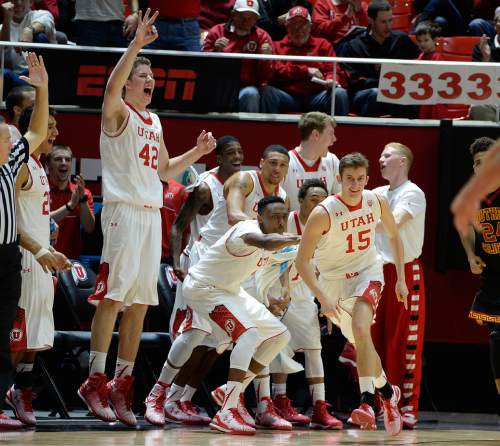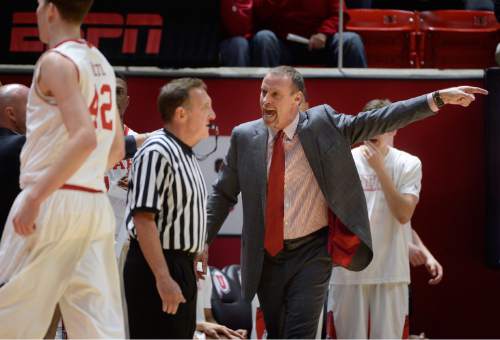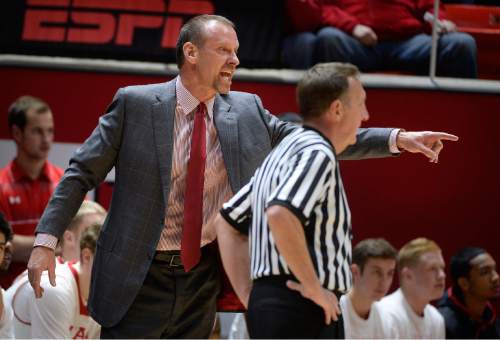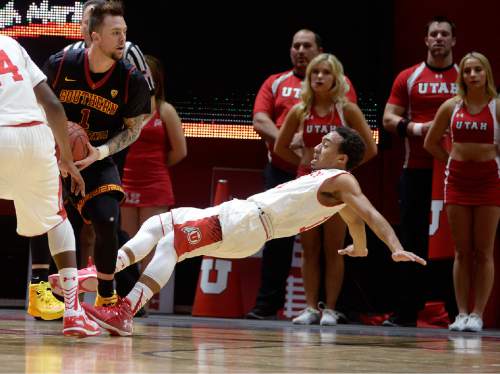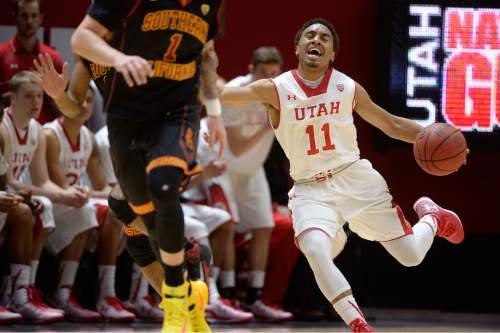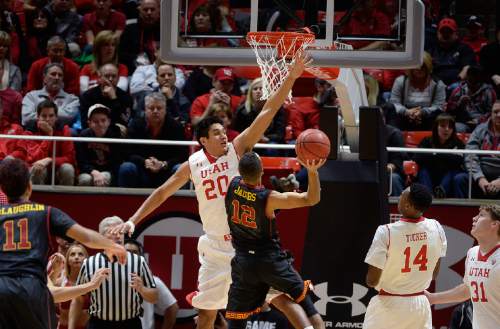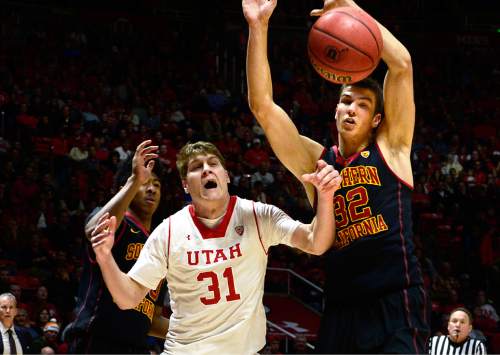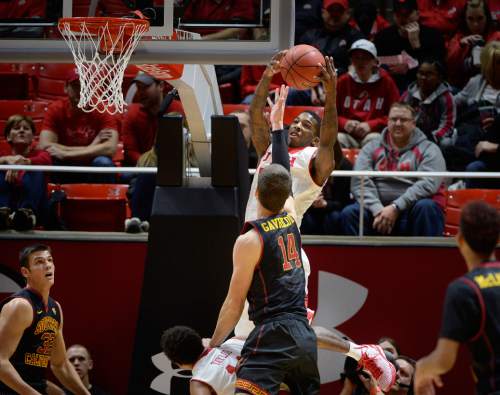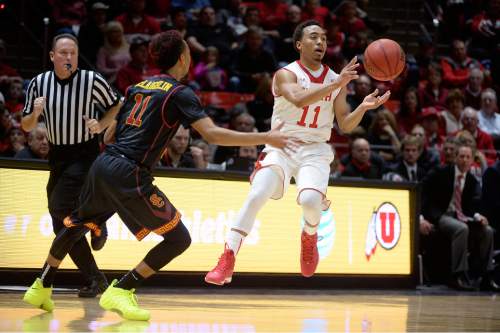This is an archived article that was published on sltrib.com in 2015, and information in the article may be outdated. It is provided only for personal research purposes and may not be reprinted.
Can a blowout come too quickly?
It took the No. 10 Runnin' Utes (11-2, 1-0) all of 19 minutes to ring up a 21-point lead on USC on Friday night. The game wasn't over, but Utah was in firm command for the final stretch.
But over the last half when the game was out of contention, maybe it allowed more time for even the most pleased observers to poke holes in what became a 24-point rout. Utah was only 10 for 20 from the free-throw line. USC had 14 offensive rebounds in the game's first 26 minutes. The defense relaxed after an authoritative first period.
Even coach Larry Krystkowiak wasn't immune from a bit of chagrin when a reporter brought up that Utah had shot better from behind the arc (58 percent) than at the line (50 percent).
"It was ironic with as much time as we've put in [shooting free throws]," he said, gritting his teeth. "Obviously in a close game, it's going to be a big thing."
Throughout the season, Utah has beaten the teams it was supposed to beat. But what about the close ones? With a troubled but talented UCLA team (8-6, 0-1) coming to the Huntsman Center on Sunday afternoon, there are some concerning flaws in an otherwise overwhelming effort.
The No. 1 issue may be the how the Utes handle the pressure at the free-throw line. In practices leading to the USC game, the Utes took free throws between each sequence of practice, needing to hit seven in a row as a team before moving on to the next drill.
For whatever reason, the emphasis hasn't yet produced results on the floor, where the Utes are shooting 65.1 percent, the No. 277-ranked free throw percentage in the country. In a close game, a reasonable defensive strategy is simply forcing Utah to the line.
There's also the issue of defensive rebounding: USC darted after misses, particularly in the first half, and got a handful of second chances that led to 12 points. If the Trojans had shot any more efficiently than 39 percent, it could have been a costly edge. USC's tenacity, particularly on 50-50 rebounds, was often the difference, Krystkowiak said.
"I think they smelled a little blood and knew it was going to be a hard night to score, so that's where they got those rebounds," he said. "We gotta toughen up and improve the rebounding. Second half, I thought we cleaned that up pretty well."
The Bruins come in as losers of their past four games, including the league opener against Colorado. But UCLA's past four opponents are all in the top 100 of RPI.
In UCLA's 62-56 loss to the Buffaloes, Colorado pulled it out thanks to its free-throw shooting (21 for 25) despite the Bruins' 16 offensive rebounds.
Hmm.
It's a short turnaround for Utah to chew on all those stats, which may be its own blessing. The Utes know what they need to work on, and they know they need to do it fast.
Having a long time to think about their shortcomings hasn't seemed to help solve them so far.
Twitter: @kylegoon —
UCLA at No. 10 Utah
O Jon M. Huntsman Center
Tipoff • 2 p.m.
TV • Pac-12 Networks
Radio • ESPN 700 AM
Records • UCLA (8-6, 0-1); Utah (11-2, 1-0)
Series history • UCLA leads, 7-5
Last meeting • Feb. 14, 2014 at UCLA; UCLA 80, Utah 66
About the Bruins • UCLA is one of the fastest paced teams in the country, ranking No. 10 nationally in possessions per 40 minutes. … At Colorado on Friday night, senior Norman Powell became the 51st Bruin to surpass 1,000 career points. … UCLA is the only team in the Pac-12 to have two top-10 rebounders in the conference, with Kevon Looney (10.2 rpg) and Tony Parker (7.6 rpg).
About the Utes • Utah is shooting 51 percent from the field, No. 7 in the country and tops in the Pac-12. … Delon Wright has been especially good at home, averaging 15 points, 6.4 assists, 4.0 rebounds per game and shooting 69.4 percent from the Huntsman Center floor. … Utah's 79-55 win over USC marked the largest margin of victory over a Pac-12 opponent in program history.


